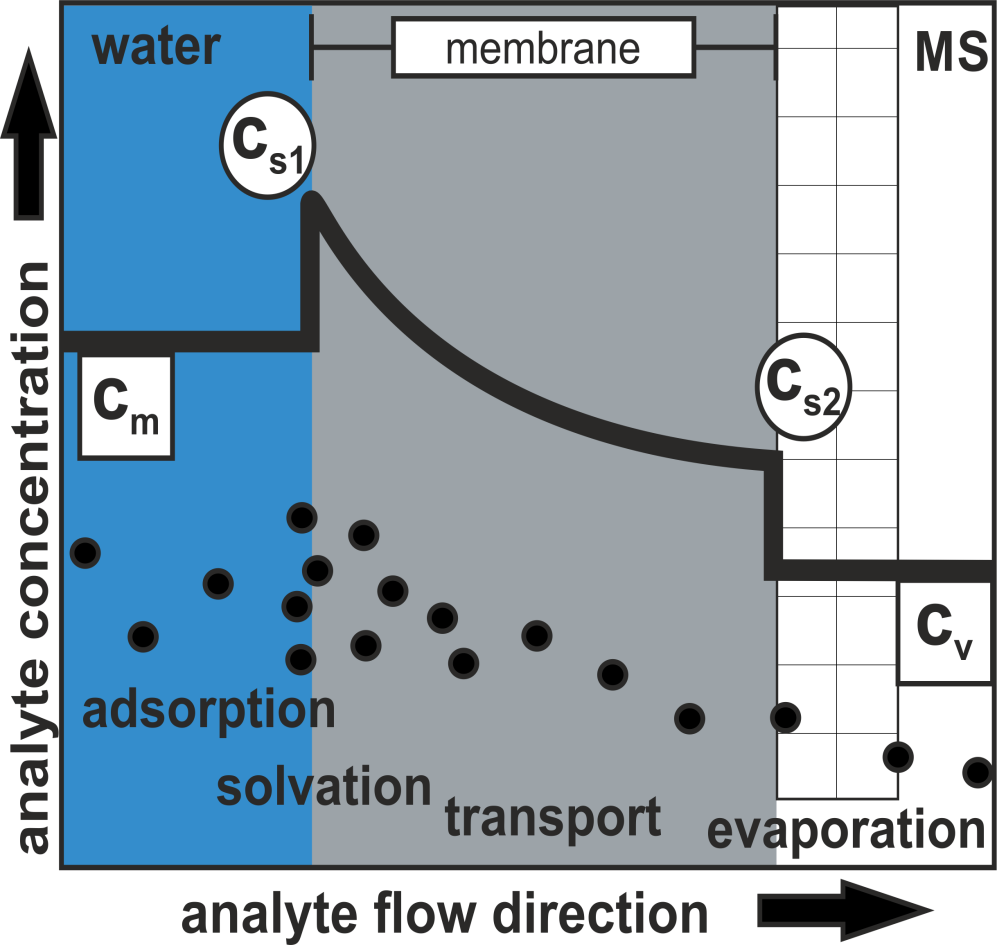Membrane introduction mass spectrometry
Fast and sensitive analysis of aromatic and polyaromatic compounds (PAH) is of high importance due to their environmental behavior, high biological activity and toxicity [1]. Very low concentrations of such compounds in marine environments make their detection and monitoring difficult. Therefore, time-consuming enrichment techniques (such as purge-and-trap and laborious extraction techniques) are applied. [2]
A promising alternative constitutes the application of membrane inlets coupled to resonance enhanced photoionization (REMPI) time-of-flight mass spectrometers (TOF-MS) to extract and analyze these compounds directly without sample preparation. As a result of the specific ionization scheme REMPI provides selective and sensitive detection of (poly)aromatic species. [3,4]
A challenge for the utilization of REMPI in aquatic systems is the transfer of dissolved analytes to the gas phase. An auspicious approach constitutes the application of membrane inlets. For membrane inlet mass spectrometry (MIMS) analytes are transported selectively from the liquid phase through a semipermeable membrane (e.g. silicon-membrane) into the vacuum of the mass spectrometer by a process called pervarporation (figure 1), losing the matrix in the process. After adsorbing and solvation, analytes are transported through the membrane based on the gradient of concentration and pressure. Additionally the adsorption step results in a slight enrichment of analytes on the membrane surface. [5]
Advantages are enrichment of the analytes on the membrane surface and a considerable reduction of analysis time.
References
[1] A. Ball, A. Truskewycz, Polyaromatic hydrocarbon exposure: an ecological impact ambiguity, Environmental science and pollution research international 20 (2013) 4311–4326.
[2] A.L. Coes, N.V. Paretti, W.T. Foreman, J.L. Iverson, D.A. Alvarez, Sampling trace organic compounds in water: a comparison of a continuous active sampler to continuous passive and discrete sampling methods, The Science of the total environment 473-474 (2014) 731–741.
[3] T. Streibel, R. Zimmermann, Resonance-enhanced multiphoton ionization mass spectrometry (REMPI-MS): applications for process analysis, Annu Rev Anal Chem (Palo Alto Calif) 7 (2014) 361–381.
[4] U. Boesl, Laser mass spectrometry for environmental and industrial chemical trace analysis, Journal of Mass Spectrometry 35 (2000) 289–304.
[5] R.A. Ketola, R.T. Short, R.J. Bell, Membrane Inlets for Mass Spectrometry, in: Comprehensive Sampling and Sample Preparation, 2012, pp. 497–533.

